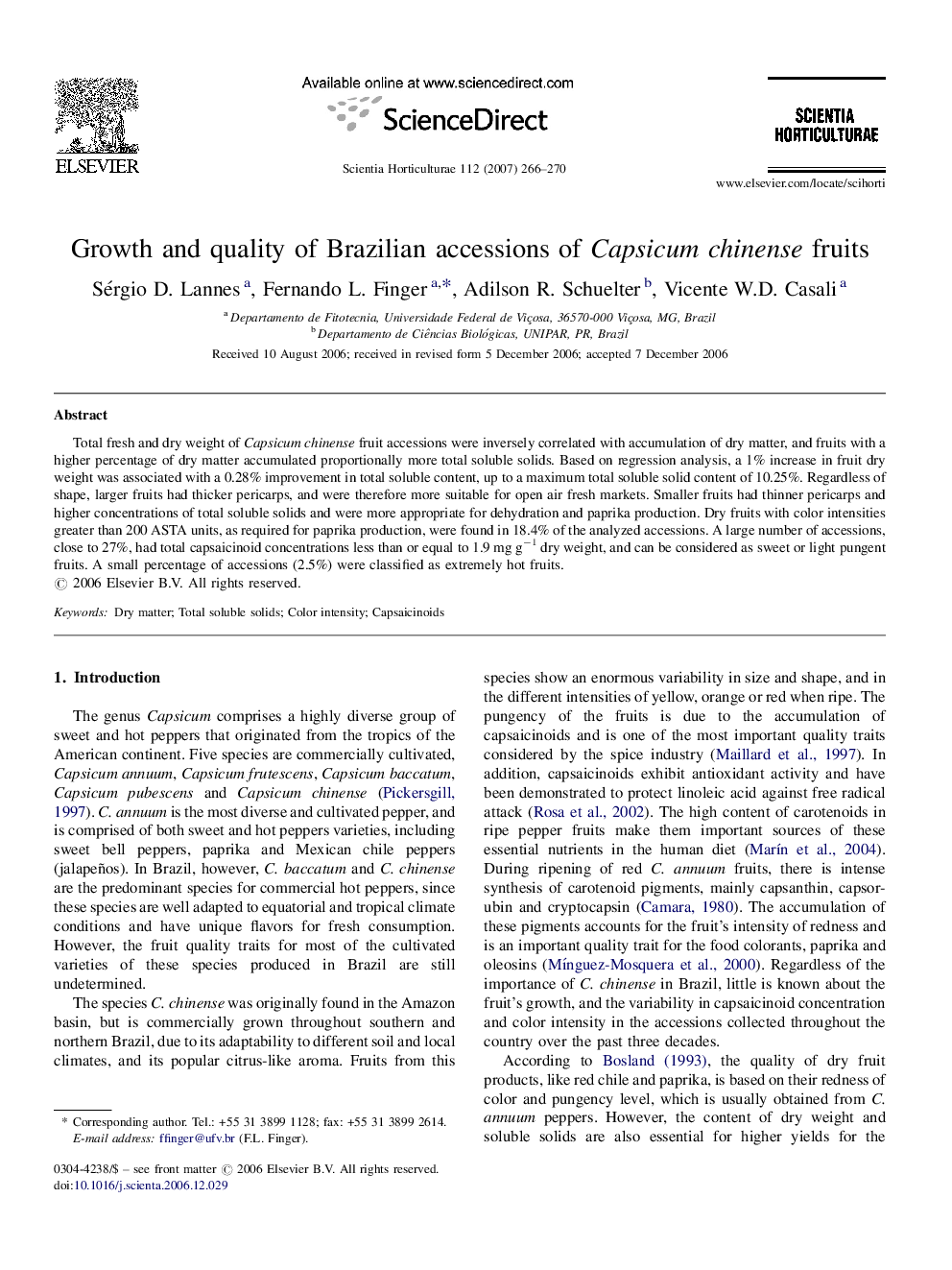| Article ID | Journal | Published Year | Pages | File Type |
|---|---|---|---|---|
| 4570013 | Scientia Horticulturae | 2007 | 5 Pages |
Total fresh and dry weight of Capsicum chinense fruit accessions were inversely correlated with accumulation of dry matter, and fruits with a higher percentage of dry matter accumulated proportionally more total soluble solids. Based on regression analysis, a 1% increase in fruit dry weight was associated with a 0.28% improvement in total soluble content, up to a maximum total soluble solid content of 10.25%. Regardless of shape, larger fruits had thicker pericarps, and were therefore more suitable for open air fresh markets. Smaller fruits had thinner pericarps and higher concentrations of total soluble solids and were more appropriate for dehydration and paprika production. Dry fruits with color intensities greater than 200 ASTA units, as required for paprika production, were found in 18.4% of the analyzed accessions. A large number of accessions, close to 27%, had total capsaicinoid concentrations less than or equal to 1.9 mg g−1 dry weight, and can be considered as sweet or light pungent fruits. A small percentage of accessions (2.5%) were classified as extremely hot fruits.
